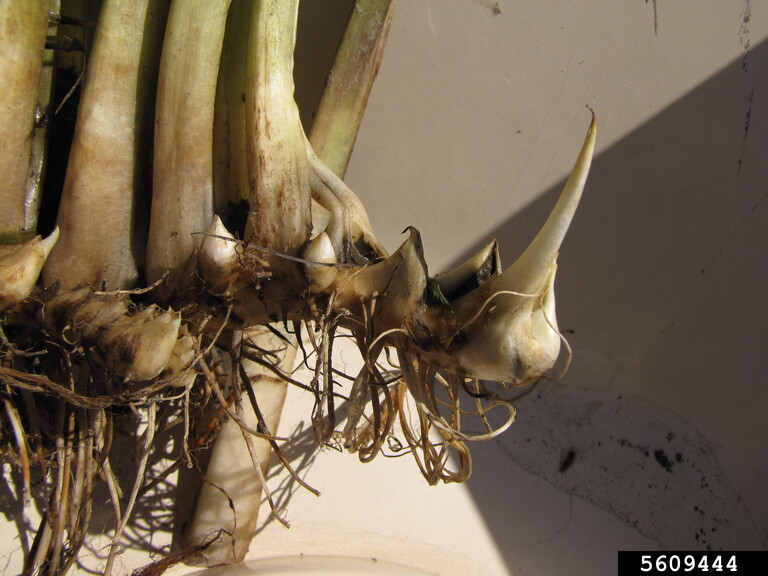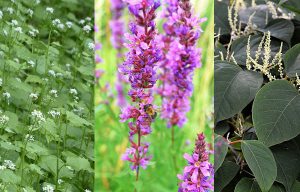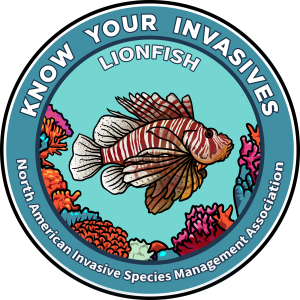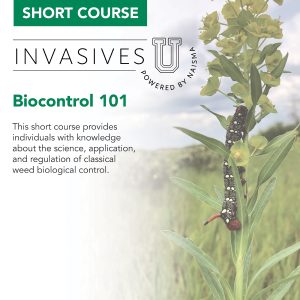In October 2021 the North American Invasive Species Management Association (NAISMA) hosted Dr. John D. Madsen, an aquatic invasive plant researcher at USDA ARS in Davis, California, for an informative webinar about flowering rush, Butomus umbellatus, an invasive plant introduced from Eurasia.
Webinar recordings are available to NAISMA members through the Members Area. Not a member? Join here.
Flowering Rush Biology
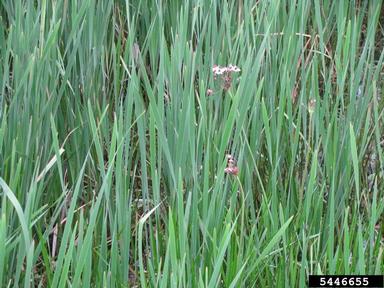
Flowering rush has spread into lakes, ponds, marshes, rivers, and irrigation ditches across southern Canada and the northern United States. Ships accidentally introduced it through dumping ballast as early as 1897, and the water garden trade introduced it as an ornamental plant for its large clusters of pink flowers. When it isn’t flowering, the invasive plant’s leaves tend to blend in among other aquatic vegetation such as cattails, sweet flag, burr-reed, and iris. Its sword-like leaves are triangular in cross section at the base of the leaf. Leaves can reach 3 meters in length when fully submersed.
Several characteristics make flowering rush a successful invader. It comes in two reproductive types: 1) a flowering, fertile diploid and 2) a seldom-flowering, mostly sterile triploid. Diploids can spread by seed, bulbils produced in the inflorescences or on the rhizomes, and from rhizome buds and fragments. Triploids spread mostly from rhizome buds and fragments and are thought to be tolerant to a broader range of environmental conditions compared to diploids. Flowering rush can grow submerged, although its biomass declines in deeper water. The plant is hardy to zone 2. Still sold in the nursery trade, the plant is listed as a noxious weed in several states in the U.S. and in Alberta and British Columbia in Canada.
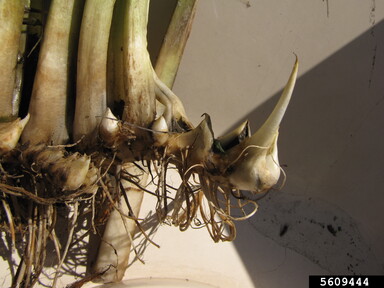
Flowering Rush Roots by Jennifer Andreas, Washington State University, Bugwood.org. 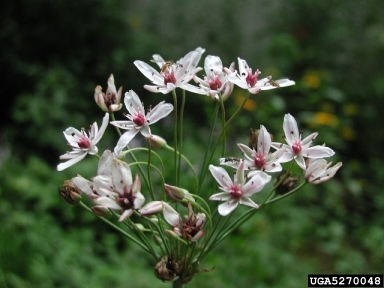
Flowering rush flowers. Photo by Leslie J. Mehrhoff, University of Connecticut, Bugwood.org 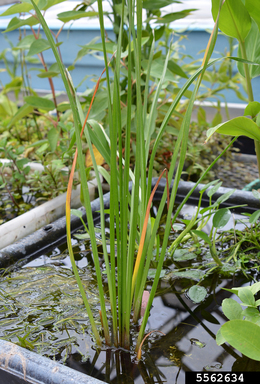
Side (lateral) view of immersed flowering rush plant. Photo by Shaun Winterton, Aquarium and Pond Plants of the World, Edition 3, USDA APHIS PPQ, Bugwood.org.
Managing Flowering Rush in Aquatic Environments
Dr. Madsen discussed how to control invasive flowering rush in different aquatic environments. In Detroit Lakes in Minnesota, submersed treatments using Diquat in June and July led to significant reductions in both above and below-ground biomass as well as an unexpected reduction in rhizome buds. Also unexpected was the minimal impact on native plants in the lakes.
In Lake Pend Oreille, Idaho, several herbicide and mechanical treatments were tested in March, during the lake’s seasonal drawdown, in mesocosms and in the field. In Dr. Madsen’s presentation, he discusses recent results showing that Imazapyr and Imazamox applied to the bare ground produced significant reductions in biomass (to be published in Journal of Aquatic Plant Management). Repeated mechanical clipping in mesocosms also reduced biomass and numbers of rhizome buds but was much more labor intensive. Mechanical treatments often spread rhizome buds and result in a bycatch of little fish.
Participants in the webinar asked about controlling flowering rush in rivers. Control in rivers using herbicides is difficult because of water currents limiting exposure time to herbicides. Often flowering rush growing in rivers will be submersed, with more robust, longer leaves.
For additional information on managing flowering rush, visit:
- Ontario Invasive Plant Council Flowering Rush Best Management Practices
- Columbia Basin Cooperative Weed Management Area Flowering Rush Management Plan
Click here to preview and register for future NAISMA invasive species webinars. When you become a member you can access dozens of recorded webinars, including topics such as “Successful Aquatic Plant Management Strategies Across the United States” and “Bridging the Gap Between Invasive Species Research and Management.”

Sylvan Kaufman
Sylvan Kaufman worked on invasive plants in the Everglades and New England during her Ph.D. studies and postdoc before becoming conservation curator at Adkins Arboretum on the Eastern Shore of Maryland. She is co-author of Invasive Plants, a guide to identification, impacts and control of invasive plant species in North America. She currently lives in Santa Fe, New Mexico.

